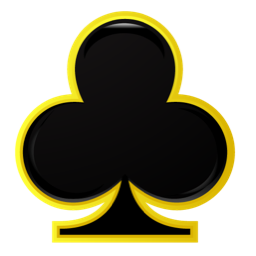Verbal Cues: What Poker Players Say and What It Means

We’ve all heard about the superstitions and so-called tells of poker, but how much of it is actually true? According to research, only 7% of poker players are able to accurately read tells. In this article, we’ll explore the myths and realities of poker tells and analyze how they affect professional poker players. We’ll also discuss how to avoid being read by others at the table and increase your odds of winning.
Defining Poker Tells
You may be wondering, what exactly is a poker tell? A poker tell is a physical action or behavior that a player might make during a card game that gives other players clues about their hand strength. It’s essentially a sign that a player can’t control, that can reveal information about their hand. While some of these tells are a myth, many are rooted in reality and can be used to gain an advantage in the game. We can break these tells into two broad categories – verbal and nonverbal.
Types of Tells
You’re likely familiar with the types of tells your opponents give off when they’re playing, from physical cues to verbal slips. There are four main types of tells: physical, verbal, betting, and table.
| Type | Description |
| Physical | Body language, facial expressions, and physical movements |
| Verbal | Slips of the tongue or changes in speech |
| Betting | The amount and timing of a bet |
| Table | Changes in the environment like the temperature of the room |
Analyzing Tells
Analyzing tells is an important part of playing poker, and it can make the difference between winning and losing. It’s essential for poker players to understand the types of tells their opponents may be exhibiting, and how to identify and interpret them. Here are 4 tips to help you analyze tells:
- Pay attention to your opponents’ betting patterns
- Look for physical body language
- Listen for vocal clues
- Consider the context of each tell.
Tells in Professional Poker
In professional poker, tells can be a powerful tool for gaining an edge over your opponents.
| Tell | Myth vs. Reality |
| Slow-Play | Myth – Players use it to deceive opponents. |
| Nervous Ticks | Reality – An indicator of strong cards. |
| Aggressive Betting | Myth – A bluff to intimidate opponents. |
| Eye Movement | Reality – A sign of weak hands. |
Tells can be a vital part of a winning poker strategy. However, understanding the difference between myth and reality is essential for success. Next, we’ll discuss how to use tells to your advantage while avoiding detection.
Avoiding Tells
Knowing how to conceal your own tells is just as important as recognizing the tells of your opponents. Whether you’re playing poker in a casino or around the kitchen table, it’s important to be aware of your body language. Even subtle body movements can give away information about your hand. Professional players understand the importance of hiding their tells, so they practice what’s known as “table image” or “table talk.” This entails consciously avoiding any tell-tale body language, such as adjusting your chips, sighing, or looking away, that could give away information about your hand. Players also use table talk to throw off their opponents, such as by making an exaggerated bet or talking about a hand they didn’t even have. It’s all about keeping your opponents guessing. With the right techniques, you can stay one step ahead of the competition and gain an edge over other players.
We’ve explored the truth behind poker tells and seen that they can be both real and imagined. With practice and study, players can start to pick up on tells and use them to their advantage. Poker is a game of strategy, skill, and emotional resilience. Like a chess game, reading your opponent’s tells can give you the edge you need to win. With poker, however, you must be careful not to give away too many of your own tells. It’s a delicate balance, but when done right, it can be like a dance; you just have to find the right rhythm.
